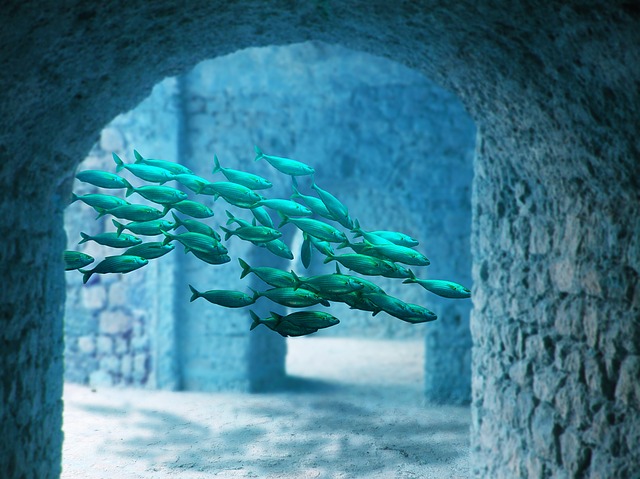There are a couple of home decor options that will almost always make guests stop and take a look. The first is any kind of decorative pond, fountain or waterfall. Aside from swimming pools, there are few things that make both homeowners and guests feel more at peace than a nearby body of water.
Second on the list is an aquarium. While the idea of an indoor habitat for fish, plants and other undersea creatures has gradually fallen out of favor over the years, a properly maintained and well-designed aquarium is a sight to behold.
The questions of where to put an aquarium and how to maintain it are important. These are priorities that should be taken seriously by homeowners. Without good planning and sufficient effort invested in maintenance, an aquarium can not only become a burden but can also become potentially dangerous and costly. Here are some things to consider.
It’s not the Whales, It’s the Water
Before opening the aquarium catalog and marveling at all the amazing options, one inescapable fact should be confronted as early as possible. Water weighs eight pounds per gallon. That means even the smallest show aquarium likely weighs close to 200 pounds without gravel, rocks or filters and some of the largest aquariums can easily top out at half a ton or more.
For this reason, if you are considering anything larger than 20 gallons, and you are planning a permanent installation, you should consult with a licensed contractor and your city or county building commission as early in the process as possible. There is a near certainty you will need a professionally installed support structure for your tank and you may need to file paperwork with your local government to perform the alterations.
You will also need to consider earthquake protection, clamps and brackets and other kinds of secured structures to prevent your tank from tipping. This is not something that can be handled by an amateur, so make certain your contractor is licensed, insured and bonded and has experience with the kinds of installations you need.
Once you have a permanent structure rated to support the weight, real estate brokers like Robert Tweed will agree you’ll have your choice of some highly impressive options.
Sunlight
Whether you ultimately choose freshwater or saltwater as your tank’s environment, you will want to take care the glass never intersects with direct sunlight. You have to remember most of the fish you purchase for your tank are used to having many feet of water between them and the sun. You should also keep in mind that sunlight leads to algae blooms, which in some cases can be extraordinarily difficult to control and can cloud the water in your tank.
Sunlight is also capable of bleaching your gravel and rocks, and if you have live plants in your tank you can run into problems keeping them alive as well. If at all possible, install your aquarium away from windows.
Conversation Piece
Once you have the basics worked out, there is nothing that will awe your guests like a properly maintained show aquarium, especially if you choose saltwater. While there are some extra steps you’ll need to take to make sure your saltwater tank is properly maintained, the truth is it isn’t all that time consuming, and the selection of fish and other species for saltwater is far more interesting.
If you have the opportunity, choose colorful tropical species like tangs, anemones, clownfish, puffers, and lionfish. Remember that most of these species remain healthiest with live food, so you will need a local and reliable supply of either goldfish, crickets, mealworms, shrimp or something similar.
Large-enough aquariums can also support more exotic creatures like sharks, octopi or eels. Make certain your local expert can properly advise you on what species should be allowed in the same tank. You have to remember these are living things who don’t know they aren’t still in the ocean. They will eat each other as readily as they’ll eat what you provide, especially if they are aggressive species.
Real estate experts like Robert Tweed know that like most major additions to your home, an aquarium requires careful planning and some advance study to make sure your vision is feasible. You need enough room, a sheltered location, properly built support, nearby access to electricity for your pumps and lights, and a means of getting to hard-to-reach areas in and around the tank for cleaning and maintenance.
Once the tank is installed and your fish, plants, and creatures have acclimated, the results are definitely worth the time and trouble.
